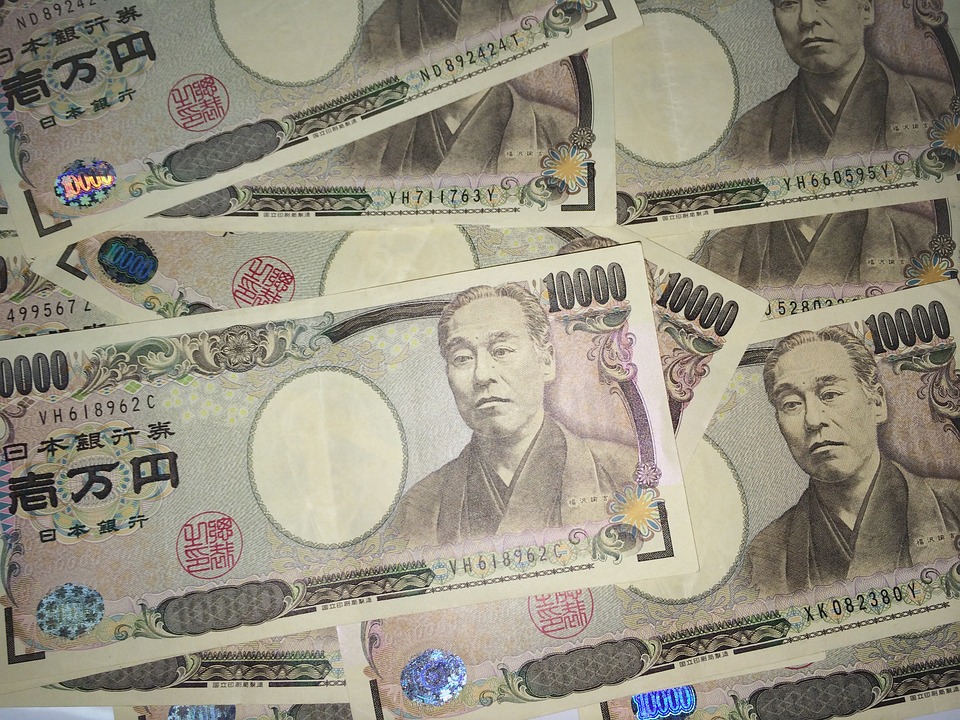Japanese Yen Remains Depressed Amid Trade-Related Uncertainties; Lacks Bearish Conviction

Image Source: Pixabay
- The Japanese Yen drifts lower amid concerns that Trump’s tariffs would affect Japan’s industries.
- The divergent BoJ-Fed policy expectations should limit deeper losses for the lower-yielding JPY.
- Traders might also refrain from placing aggressive bets ahead of Trump’s tariffs announcement.
The Japanese Yen (JPY) sticks to its negative bias through the Asian session on Wednesday, lifting the USD/JPY pair back closer to the 150.00 psychological mark. Speculations that a tariff-driven economic slowdown might force the Bank of Japan (BoJ) to keep the policy steady for the time being undermine the JPY. Apart from this, a generally positive tone around the Asian equity markets turns out to be another factor weighing on the safe-haven JPY.
Investors, however, seem convinced that the Bank of Japan (BoJ) will continue raising interest rates amid signs of broadening inflation in Japan. This marks a big divergence in comparison to bets that the Federal Reserve (Fed) will resume its rate-cutting cycle soon and should act as a tailwind for the lower-yielding JPY. Apart from this, subdued US Dollar (USD) price action should contribute towards capping any further appreciating move for the USD/JPY pair.
Japanese Yen bulls remain on the back foot amid trade uncertainty, improving risk sentiment
- Asian equity markets tracked the overnight gains on Wall Street ahead of the impending reciprocal tariffs announcement from US President Donald Trump on Wednesday, undermining the safe-haven Japanese Yen.
- Meanwhile, Trump dashed hopes that the levies would be limited to a smaller group of countries with the biggest trade imbalances and said on Sunday that so-called reciprocal tariffs would essentially include all nations.
- Furthermore, worries that the new levies would have a far-reaching impact on Japan's key industries forced investors to scale back their expectations that the Bank of Japan would raise policy rate at a faster pace.
- However, the incoming macro data, including strong consumer inflation figures from Tokyo released last Friday, keeps the door open for further interest rate hikes by the BoJ and helps limit deeper losses for the JPY.
- The Federal Reserve, on the other hand, remains in an uncomfortable position on the back of rising prices and slowing business activity, which implies that the economy could be heading toward stagflation.
- The concerns were further fueled by data showing that the manufacturing sector contracted for the first time in three months and inflation at the factory gate jumped to the highest level in nearly three years.
- In fact, the ISM Manufacturing Purchasing Managers Index (PMI) fell to 49 from 50.3 in February. Moreover, the Employment Index highlights a decrease in the sector's payrolls at an accelerating pace.
- Adding to this, the Job Openings and Labor Turnover Survey (JOLTS) revealed that the number of job openings on the last business day of February stood at 7.56 million, down from 7.76 million in January.
- The markets are currently pricing in the possibility that the Fed would lower borrowing costs by 80 basis points by the end of this year, which fails to assist the US Dollar in attracting any meaningful buyers.
- Meanwhile, the divergent BoJ-Fed expectations could further narrow the rate differential between Japan and the US. This, in turn, should limit losses for the lower-yielding JPY and cap the USD/JPY pair.
- Traders now look forward to Wednesday's US economic docket – featuring the ADP report on private-sector employment and Factory Orders – for some impetus ahead of Trump's tariffs announcement.
USD/JPY could attract fresh sellers while below the weekly high, around the 150.25 region
From a technical perspective, the USD/JPY pair has been showing resilience below the 100-period Simple Moving Average (SMA) since the beginning of this week. The subsequent move up could favor bullish traders, though neutral oscillators warrant some caution. Moreover, the recent breakdown below a multi-week-old ascending channel makes it prudent to wait for strong follow-through buying before positioning for any meaningful gains.
In the meantime, the weekly high, around the 150.25 area, could act as an immediate hurdle. A sustained strength above could lift the USD/JPY pair beyond the 150.75-150.80 hurdle, towards the 151.00 mark. This is followed by the March monthly swing high, around the 151.30 region and a technically significant 200-day SMA, currently pegged near the 151.60 zone, above which spot prices could reclaim the 152.00 mark and climb further to the 152.45-152.50 region en route to the 100-day SMA, around the 153.00 round figure.
On the flip side, the 100-period SMA on the 4-hour chart, currently around the 149.30-149.25 area, followed by the 149.00 mark and the 148.70 region, or the weekly swing low, could offer support to the USD/JPY pair. A convincing break below, however, will be seen as a fresh trigger for bearish traders and make spot prices vulnerable to resume a well-established downtrend witnessed over the past three months or so.
More By This Author:
EUR/USD Price Forecast: Sellers Hold The Grip As Liberation Day LoomsSilver Price Forecast: XAG/USD Holds Steady Above $34.00, Seems Poised To Climb Further
Japanese Yen Trades With Mild Positive Bias Against USD; Bulls Seem Non-Committed
Disclaimer: Information on these pages contains forward-looking statements that involve risks and uncertainties. Markets and instruments profiled on this page are for informational purposes only ...
more



